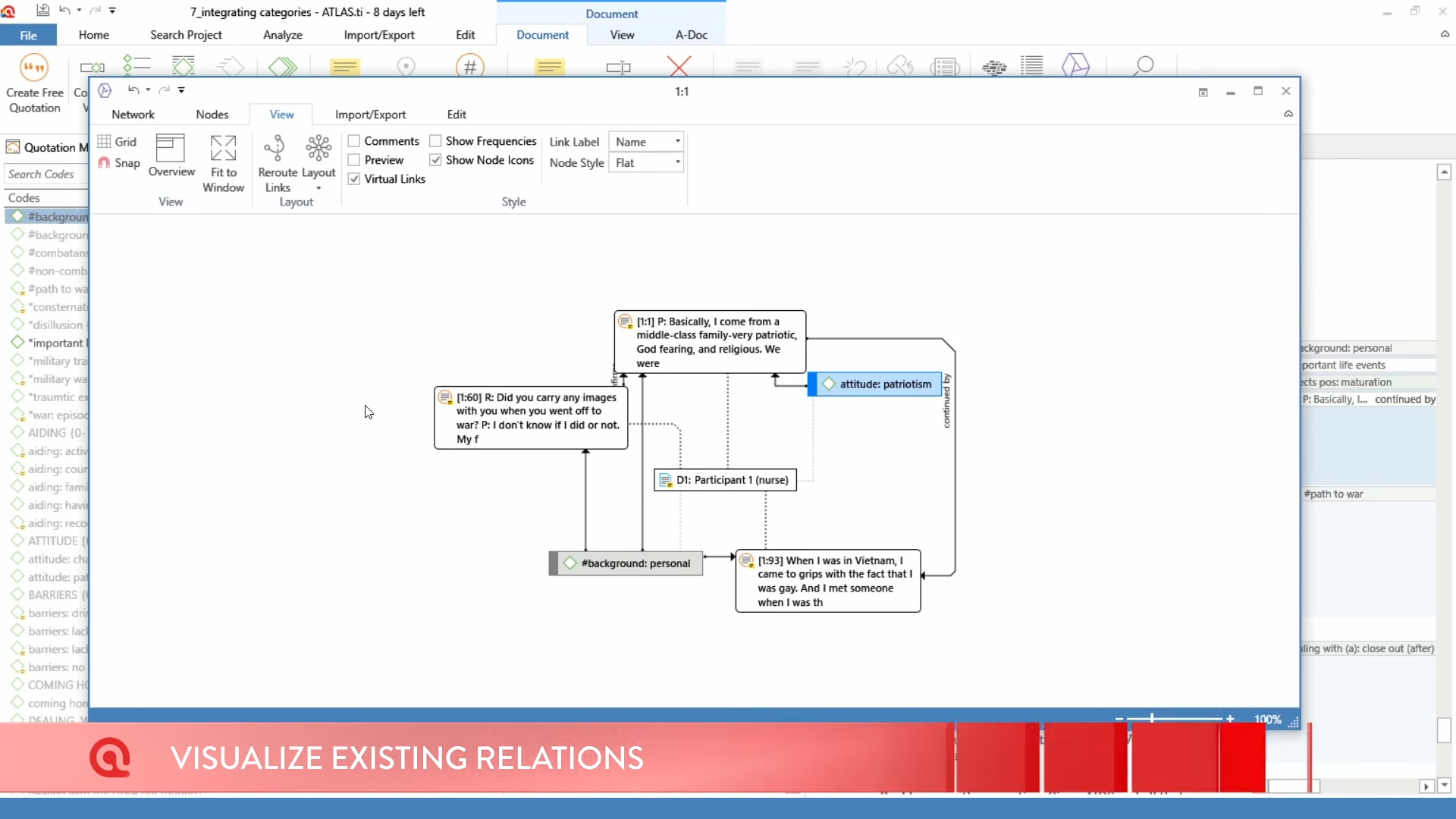

You can download a free trial version of ATLAS.ti here. The course can use sample data, although preferably your own research material, to learn ATLAS.ti's functionalities in your own context.Īlthough no previous knowledge of ATLAS.ti is required, participants should have some familiarity with qualitative research.
#Atlasti qda manual#

#Atlasti qda software#
We work closely with you to understand your particular needs and future use of the software and design the right content, providing participants with a real sense of how they can best utilise the software to meet their particular needs, rather than what the software will allow them to do in a general sense. Although our courses are structured around a logical overview of the qualitative analysis process, we do not deliver mechanical, functional training. Individual support – time for participants to discuss their projects with the tutorĪll our sessions are bespoke.Guided instruction – step-by-step teaching in the operation of ATLAS.ti and the use of tools for analytic tasks.Analytic planning – introduction to the Five-Level QDA method as a tool for harnessing ATLAS.ti powerfully.Software overview – interface, architecture, components, actions and tools.Contextual discussions – developmental, methodological and analytical principles.It follows the Five-Level QDA principles for harnessing ATLAS.ti powerfully, combining discussion, demonstration and hands-on practice with using ATLAS.ti, including: Know where to access relevant resources to support continued ATLAS.ti use.Īt the end of this course, you will learn to set up a project, code, retrieve and visualise data.Identify ATLAS.ti tools that can be used to fulfil specific analytic tasks.Set up an ATLAS.ti project to reflect initial research design and change structures as a research project progresses.

#Atlasti qda how to#
Implications for teaching QDAS as well as the development of the Five-Level QDA method are explored.Introduction to ATLAS.ti Training Learn how to analyse qualitative data using ATLAS.ti like the experts do. While the method emphasizes that powerful use of the software requires analytic strategies to drive software tactics, learners may view the two as mutually constituting. Hands-on exploration of the software components during the workshop, including demonstration of both in-progress and completed projects by the instructor and peers, can bring life to the Five-Level QDA method. For the method to be successful, methodological competence prior to training and ongoing support after training are necessary, both of which may be fostered by using community-building strategies during and after instruction. Using a case study and reflective practice approach, we reviewed instructional materials, observational field notes, instructor reflections, student questionnaires, and interviews to describe what happened during the workshop as well as instructor and learner perceptions of the method. By focusing on the translation process between analytic strategies and the tactics of the software, we sought to help students harness ATLAS.ti powerfully. In this paper, we report our experience using the Five-Level QDA® method to guide the design of an introductory ATLAS.ti workshop. As more researchers rely on self-teaching, more research into best practices for developing QDAS expertise is warranted. Few studies have explored approaches to teaching qualitative data analysis software (QDAS).


 0 kommentar(er)
0 kommentar(er)
